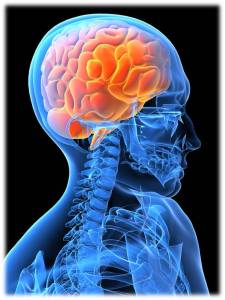Are you an emotional eater? For instance, do you get triggered to eat when under stress? Do you eat for comfort, escape or to feel good? Do you eat to anesthetize bad feelings about yourself? Or do you reward yourself with food for working hard, eat when bored, or because it’s just plain fun? Are you eating when not actually hungry? Does the word diet make you cringe?
If you said yes to any or all of these questions, don’t worry you are not alone. Moreover, it is not your fault!
You are not a bad or worthless person because you struggle with food. At a young age, many of us grew up learning from our parents and caretakers to use food as a reward and as a result “attached” a good feeling or positive outcome to certain foods. For instance, our parents gave us a cookie or piece of candy to illicit a specific behavior-all with good intentions, but we sometimes learned to use food to feel good when feeling badly. We were also taught to clean our plates and not be wasteful so we stopped listening to our body’s natural response to stop when full and satisfied. This coupled with cultural pressure to adhere to a specific body type or image has created not a sense of empowerment but confusion and perhaps feelings of self-loathing and unworthiness for not “measuring up”!
So, right now is the time to begin to make the shift from what your mind desires to actualizing that vision of a healthy, fit self to the body! And in the words of Wayne Dyer, a beloved self-help guru- “EXCUSES BEGONE”!
Rule #1: Decide what eating and exercise plan is best for you.
Rule #2: Visualize what you want and will look like as healthy and fit, give this image detail-what is future you wearing, eating and doing? Try her/him on like new clothes: jump inside and look out through his/her eyes and see what it feels like to be fit, healthy and happy. Another way to design the future you is to make a vision board. To complete a vision board use pictures, images from magazines etc regarding things like healthy foods, exercise, rewards and positive words and phrases, then put on a wall where you’ll see it daily. This will help with motivation and to reorganize and propel the mind toward goal.
Rule #3: Stop beating yourself up and get ready to make a change!
Next, take the time to identify your thoughts and beliefs about yourself that make you stay stuck in a negative pattern and then turn it around or flip it!
Some common negatives and useful flips are:
- Empowerment vs Loss. Get rid of the word “diet” which equates lacking something and can’t have to “I choose to eat this instead of that”.
- Think “I now am making intelligent food choices for my body and health vs “I can’t have that because I am on a diet because I was bad!”
- ”It’s too hard and will take too long” vs. “right now, today I’m doing it and it feels good to be on track today”….remember everyone wants to lose 20lbs 7 months ago when they look in the mirror. It took time to gain it so isn’t it worth your time now to lose it?
- Think of food as fuel for energy and ask when reaching for something to eat “Will this fuel my body and feed my brain”.
- “I already cheated with 3 cookies today so why stop I blew it and I might as well finish the box vs. “Stop-Right now I am again taking control and putting the cookie box down”
- “My goal is to be healthy, fit and happy” vs “skinny, thin or a particular size or number”
- I’m feeling stressed, badly now” vs “this too will pass”, take a drink of water and redirect mind with new behavior(take a walk, meditate, listen to music, etc to create the calm your wanting)
- For cravings, take the urge of eating badly thru your mind to the known end result of weight gain, and unhealthy. Next, immediately take a deep breath and visualize your future you model , and recall the positive feeling. This will help to re-motivate and dispel the craving.
- Keeping essential oils like orange or lavender to breathe in when feeling badly or stressed will help to calm and relax and to retrain your brain by pairing the old response of eating or binging with a new one.
It is important to take the time to take care of yourself. There are many good programs out there, find the one that best suits your metabolic and physical needs. Seek a physician for the green light and have any tests that you were putting off to “get a good bill of health” before getting started. However, beyond exercise and a healthful nutrition plan, the most essential and often overlooked component of a weight loss program is addressing the emotional response to food when it is no longer a useful one. Find a therapist you connect with to help you with your specific issues.
Finally, the bottom line is, after clearing past and current emotional triggers to food, identifying negative self-talk patterns and how that creates your feelings and behavior, will greatly enhance a sense of peace, calm and balance while in the body and break the proverbial “hamster on the wheel” cycle of losing weight only to regain it. After all, when feeling empowered, energy and motivation increase.
Why not give yourself permission today to stop the old cycle and be the change you desire, make the shift and become “SELF-ACTUALIZED”!!!
